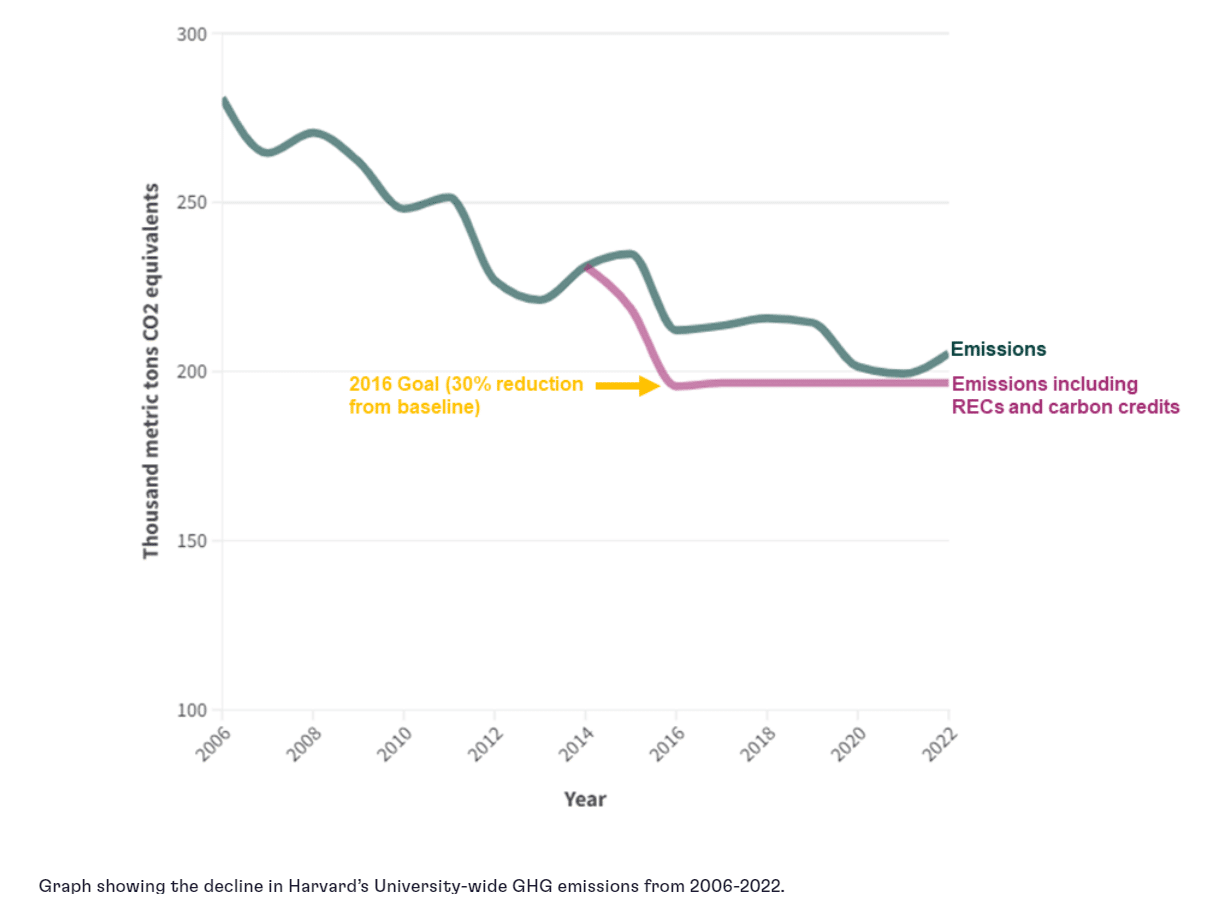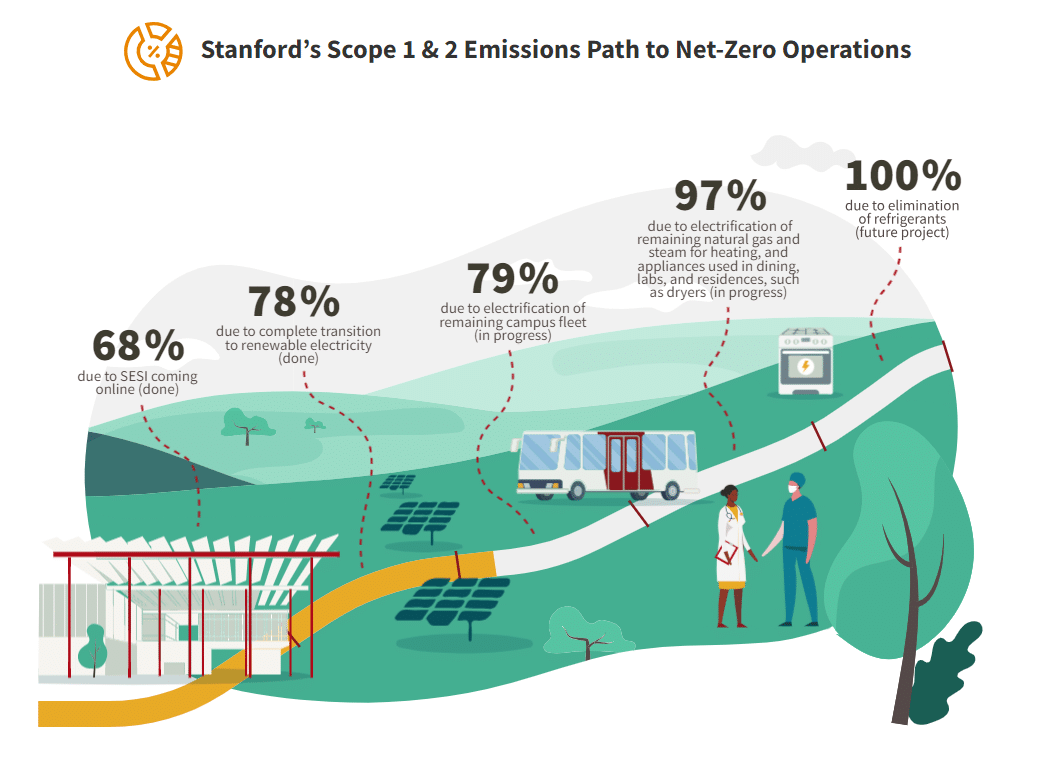Table of Contents
With almost every nation endorsing the Paris Agreement, the goal is to limit global warming to below 2°C by reducing greenhouse gas (GHG) emissions. However, a significant amount of carbon dioxide has already been accumulated in the atmosphere since the Industrial Revolution. Merely halting emissions would not be enough to reverse climate change.
Climate scientists suggest to remove 10 gigatons of CO2 annually by 2050 and 20 gigatons thereafter to meet the climate target.
In response, professionals and researchers worldwide are actively exploring carbon removal technologies to mitigate the impact of accelerating climate change. Research institutions, in particular, are focusing on curbing their GHG emissions and developing technologies for carbon capture and storage (CCS).
Negative emissions solutions like CCS or carbon capture utilization and storage (CCUS) are gaining importance. Top universities worldwide are actively contributing to this effort, each with specialized research groups focusing on various aspects of carbon capture and utilization. These ranges from capturing CO2 from smokestacks to developing innovative products that use atmospheric CO2 in beneficial ways.
Other top universities are implementing ways on how to directly curb their own carbon emissions and footprint to reach Net Zero goals. Here are the top six universities in the United States and what they’re doing to help in this fight.
Harvard University and Its Zero Goal
Faculty and students from across the Harvard community are working on ways to address climate change and its effects. The university has implemented various sustainability and climate initiatives. Here are some of them:
- Salata Institute for Climate and Sustainability: Established in fall 2022 with a generous $200 million gift from Melanie and Jean Salata, the institute serves as a hub for interdisciplinary collaboration, research, and engagement aimed at addressing the climate crisis.
- Sustainability Management Council (SMC): Senior leaders in operations, facilities, and administration convene regularly to facilitate the sharing of best practices and achieve the University’s sustainability and energy management objectives.
- Council of Student Sustainability Leaders (CSSL): Comprising graduate and undergraduate students involved in sustainability-related groups, the CSSL fosters collaboration, networking, and feedback on Harvard’s sustainability initiatives.
- Climate Solutions Living Lab: This initiative combines pedagogy and applied research to advance climate goals through interdisciplinary student projects focused on solutions for the building and energy sectors.
- Harvard Green Office Program: This program guides staff in creating sustainable workspaces, promoting environmental stewardship across the University.
- Resource Efficiency Program (REPs): Founded in 2002, REPs promotes sustainability within undergraduate housing through peer-driven educational initiatives.
Harvard’s Sustainability Action Plan underscored the university’s unwavering commitment to environmental stewardship and its relentless pursuit of sustainability initiatives both on campus and in broader contexts.
Central to Harvard’s agenda is the acceleration of clean energy adoption and the complete transition away from fossil fuels. Through these efforts, Harvard aims to establish a blueprint for a decarbonized world as shown by its decreasing carbon footprint.
Harvard University Carbon Emissions, 2006-2022
Goal Zero: A Fossil Fuel-Free Harvard
Harvard has set a bold objective to achieve fossil fuel-free status by 2050, surpassing the benchmark of merely attaining “carbon neutrality.”
While carbon neutrality typically involves offsetting emissions through initiatives like renewable energy procurement and tree planting, Goal Zero, as embraced by Harvard, aims for the complete elimination of fossil fuel usage. This approach acknowledges the comprehensive spectrum of harms stemming from fossil fuel consumption, going beyond carbon emissions alone.
Recognizing the manifold negative impacts of fossil fuels, which extend to their role as key components in plastics and toxic chemicals, Harvard also endeavors to curb these dependencies. This multifaceted approach aligns with the university’s broader mission to mitigate waste and foster a healthier, more sustainable value chain.
As an interim measure to progress towards Goal Zero, Harvard has established a short-term target to achieve fossil fuel neutrality by 2026. This entails eliminating campus emissions (both Scope 1 and Scope 2) and investing in initiatives that not only neutralize GHG emissions but also mitigate the adverse health effects of fossil fuel usage, such as air pollution.
By prioritizing human health, social equity, and slashing carbon footprint, Harvard aims to generate positive impacts through its transition to fossil fuel neutrality.
MIT’s Plan for Action on Climate Change
Since the announcement of Massachusetts Institute of Technology’s Plan for Action on Climate Change in October 2015, MIT Energy Initiative (MITEI) has made significant strides in research, education, outreach, and engagement efforts aimed at combating climate change and advancing clean energy solutions.
MITEI established its Carbon Capture, Utilization, and Storage (CCUS) Center in 2006 as part of its commitment to addressing climate change through innovative energy solutions. The center brings together faculty members focused on research in 3 key areas: capture, utilization, and geologic storage of CO2.
Within the CCUS Center, researchers explore a range of technologies and methods, including molecular simulation, materials design, catalytic processes, fluid mechanics, and advanced imaging techniques. They are developing emerging technologies for gas storage and separation.
Geologic storage research investigates the behavior of CO2 in underground reservoirs, including its interactions with pore fluids, and employs advanced imaging techniques to better understand the opportunities and risks associated with storing carbon dioxide underground.
Through these efforts, MIT is contributing to the development of innovative solutions for carbon capture and storage, essential for mitigating climate change. Here are the other key achievements of the university in various aspects of its efforts in cutting carbon emissions:
Research:
- MITEI’s research portfolio focuses on deep decarbonization across four major energy sectors—power, transportation, industry, and buildings—to address climate change and expand access to clean energy.
- The establishment of Low-Carbon Energy Centers has facilitated collaborative research efforts with industry partners to tackle pressing energy challenges. These centers help in advancing projects related to mobility systems, energy storage, carbon capture, and more.
- Major studies and reports, such as “Insights into Future Mobility” and “The Future of Nuclear Energy in a Carbon-Constrained World,” have provided comprehensive analyses of key technologies and sectors, informing policy and business decisions.
Education and Outreach:
- MITEI has been actively involved in educating students and the public about climate change and clean energy solutions through various initiatives, including workshops, seminars, and educational programs.
- The Mobility Systems Center, established as part of MITEI’s research efforts, has contributed to the understanding of individual travel decisions and the importance of sustainable mobility.
Engagement and Collaboration:
- Collaboration with industry partners, including global engineering and energy companies like IHI, Iberdrola, Eni S.p.A., and ExxonMobil, has led to significant advancements in clean energy technologies and policies.
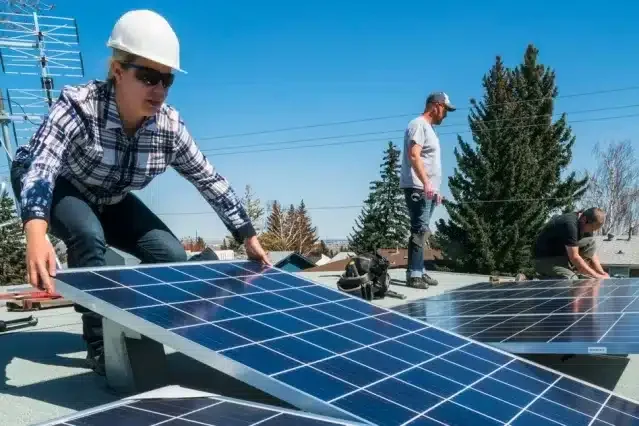
- Membership agreements and collaborations with companies have resulted in substantial financial support for research projects, professorships, and technology development initiatives.
MIT is also joining the race to zero by aiming to eliminate direct emissions by 2050, with a near term milestone of net zero carbon campus emissions by 2026.
The university takes a multifaceted approach to achieve such climate goal. In general, the school will focus on:
- Decarbonizing its on-campus energy systems,
- Enabling large-scale clean energy generation on- and off-campus, and
- Embracing new decarbonization solutions.
These efforts underscore MIT’s commitment to addressing climate change and accelerating the transition to a sustainable energy future.
Yale University’s Center for Natural CO2 Capture
Founded with a transformative donation from FedEx and as a part of Yale’s Planetary Solutions Project, the Yale Center for Natural Carbon Capture is dedicated to exploring the science of natural carbon capture. Its mission is to develop solutions that contribute to addressing some of the most pressing challenges of our time.
The Center introduces fresh and innovative research and researchers to the Yale community, forging connections with relevant research laboratories both on and off-campus. Through funding research projects, workshops, and fellowships, the Center supports initiatives at the University and invests in training the next generation of scientists and practitioners. These efforts revolve around three primary Focus Areas:
- Ecosystem & Biological Capture,
- Geological & Ocean Capture, and
- Industrial Carbon Utilization.
Over the past year, the Center has achieved several notable milestones. Among these, two standout initiatives have emerged: the Yale Applied Science Synthesis Program (YASSP) and significant advancements in enhanced rock weathering (ERW).
YASSP connects academic researchers, policymakers, and those managing lands to answer applied questions about how land management decisions affect the services provided by forests, croplands, wetlands, rangelands, and grasslands.
Yale’s Net Zero Goal
Yale University is dedicated to achieving zero actual carbon emissions by 2050, with an interim objective of reaching net zero emissions by 2035. This goal will primarily be accomplished by reducing campus emissions by 65% below 2015 levels and, if needed, utilizing high-quality, verifiable carbon offsets.
The ultimate aim of zero actual carbon emissions will involve minimizing campus emissions entirely and implementing clean energy technology. The university managed to cut emissions by 28% since 2015, as seen below, despite a huge increase in campus size.
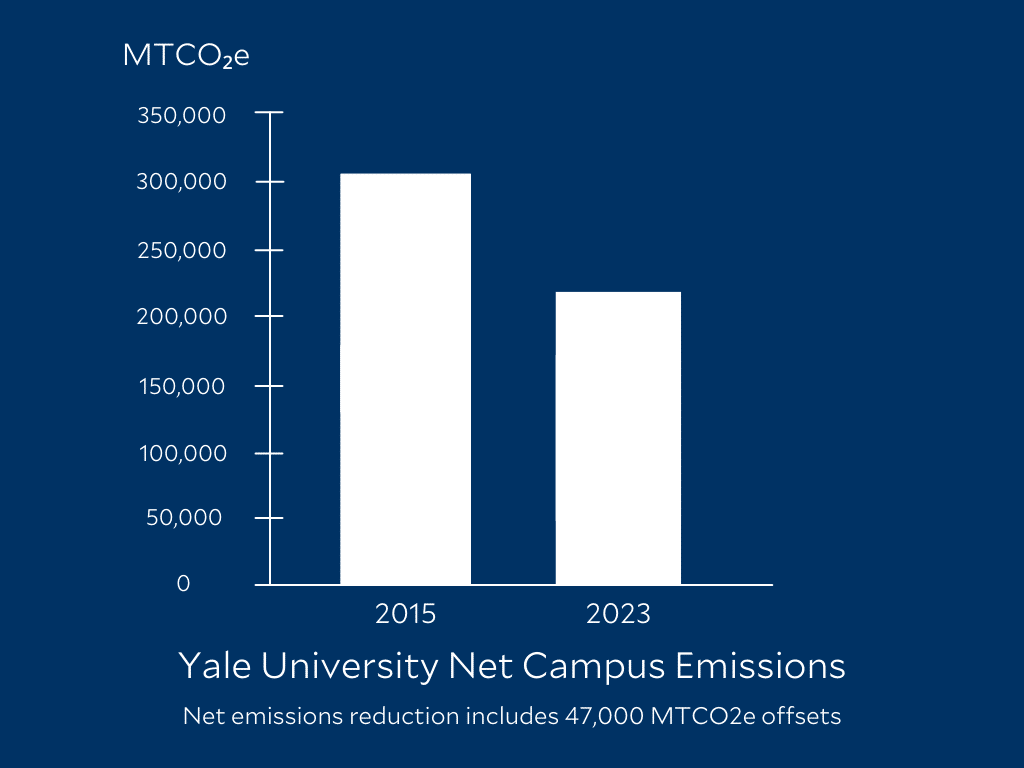
Additionally, investments are being made in campus infrastructure and emerging technologies to mitigate the university’s environmental impact. Yale has also adopted fossil fuel investment principles to facilitate a transition towards a decarbonized energy future.
Yale’s efforts to reduce carbon emissions include:
- Responsible energy use through conservation, efficiency upgrades, and innovative approaches to campus operations.
- Ensuring that energy generation on campus is efficient and environmentally friendly.
- Implementing a greenhouse gas emissions reduction strategy to steadily progress towards zero emissions targets.
- Purchasing and retiring high-quality, verified carbon offsets when necessary to meet emissions goals.
Stanford University Center For Carbon Storage
Stanford University leads global research on carbon sequestration, tackling critical questions on flow physics, monitoring, geochemistry, and more. They study CO2 storage in depleted oil and gas fields, saline reservoirs, and explore policies and techno-economics.
Stanford also focuses on capturing CO2 with engineered and natural applications, and combines bioenergy production with carbon capture to achieve net-negative emissions. Additionally, they research the impact of carbon taxes and cap-and-trade systems on CO2 capture and storage implementation.
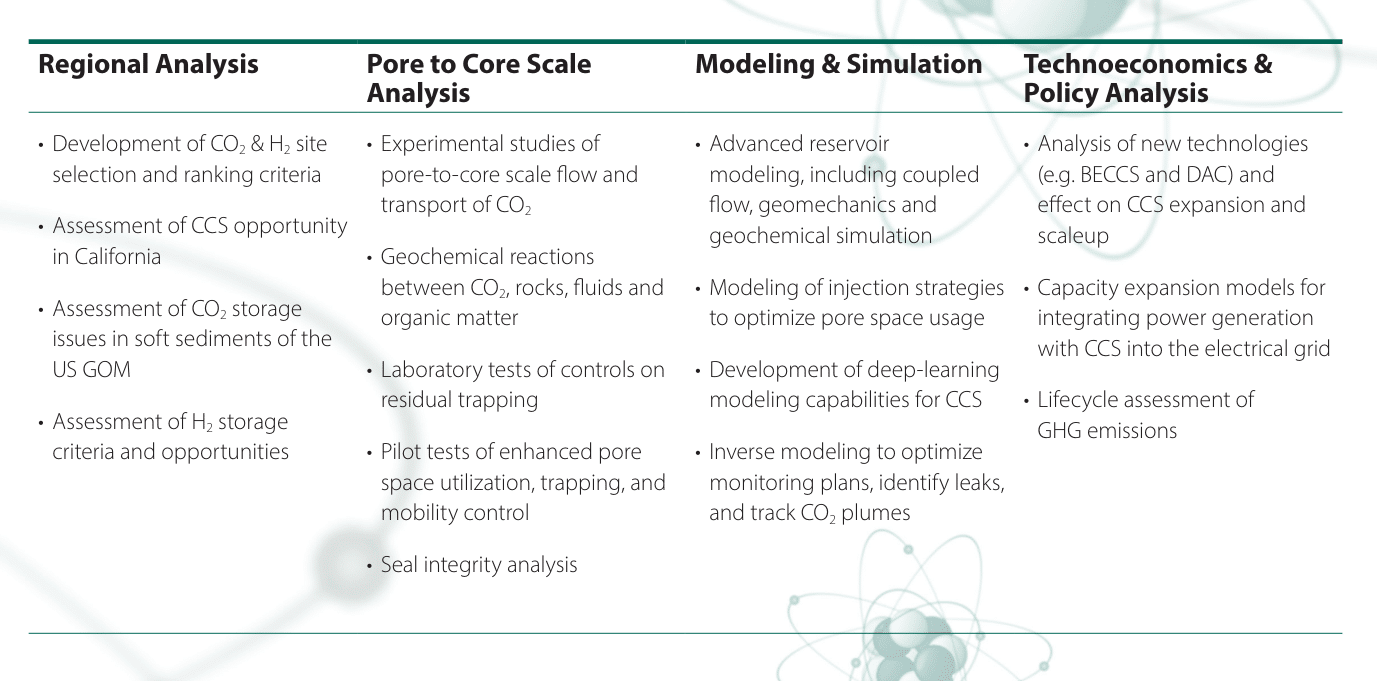
The Stanford Center for Carbon Storage is focused on advancing crucial Carbon Capture and Storage (CCS) technologies aimed at capturing greenhouse gas emissions from smokestacks and securely storing them. Their research efforts are directed towards developing cost-effective methods for permanent storage on an industrial scale.
Visit this link to get to know more about the university’s CCS research highlights.
The center is actively addressing fundamental questions related to flow physics, monitoring techniques, geochemistry, and simulation of CO2 transport and behavior once stored underground. Their storage research encompasses a variety of geological formations, including fully-depleted oil fields, saline aquifers, and other unconventional reservoirs.
Stanford’s Path to Net Zero
The university also aims to reach net zero emissions by 2050, following this pathway:
After completing the full year of 100% renewable electricity, Stanford University revealed new goals to get rid of construction and food-related emissions by 2030.
The university is currently monitoring Scope 3 emissions across eight categories, including business and student travel, fuel and energy activities, waste, employee commute, construction, purchased goods and services, leases, and food purchases.
There’s still much work to be done to decrease Stanford’s scope 3 emissions. But with the two emission reduction goals revealed last year, they represent significant progress in the university’s understanding of and ability to reduce these emissions.
These goals underscore climate action as a fundamental value for the departments involved and showcase close collaboration on sustainability initiatives across the university.
Arizona State University: The Center For Negative Carbon Emissions
Arizona State University’s Center for Negative Carbon Emissions is at the forefront of advancing direct air capture (DAC) technologies, crucial for achieving a carbon-negative economy. The center has developed an innovative carbon management cycle focused on capturing carbon dioxide directly from the air.
Their goal is to demonstrate a system that enhances the efficiency and scalability of DAC while reducing costs. Currently, they are testing a prototype technology utilizing “mechanical trees” to extract CO2 from the air. These 10-meter-high structures employ a sorbent, an anionic exchange resin, which absorbs CO2 when dry and releases it when exposed to moisture.
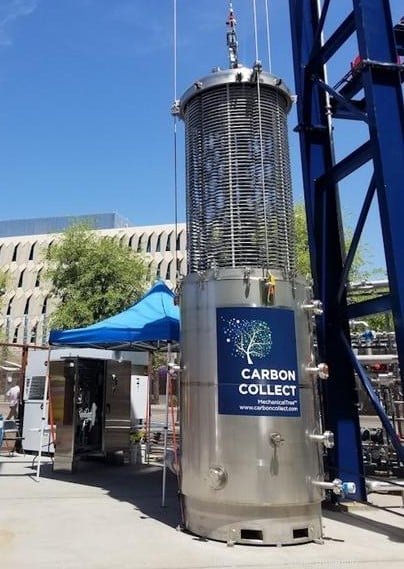
Within just 20 minutes, these “mechanical trees” can capture greenhouse gases brought by the wind. The collected CO2 is then converted into a liquid that can be used to produce carbon-neutral fuel, other products, or sequestered for permanent disposal.
The research on mechanical trees has been ongoing for two decades and was pioneered by Dr. Klaus Lackner, the director of the Center for Negative Carbon Emissions. These trees are remarkably efficient, being a thousand times more effective than natural trees at removing CO2 from the atmosphere.
In addition to technological advancements, the center also examines the economic, political, and social implications of widespread implementation of affordable DAC technology, aiming to lead the way in the field of direct air capture.
ASU Climate Positive Pledge
Since fiscal year 2019, the university has been carbon neutral for scope 1 and 2 emissions through energy efficiency measures, green construction, offsetting, and renewable energy acquisition. The university is working toward achieving the same for its Scope 3 emissions by 2035.
ASU emphasizes energy efficiency and conservation through various initiatives. The university also promotes low-carbon energy sources, with 43% of energy in 2022 coming from such sources.
The school further aims for carbon-neutral transportation by 2035, achieving a milestone with single-occupancy vehicle travel reduced to 59% in 2022. Initiatives include bike parking expansion, ride-sharing incentives, electrification of fleet vehicles, and free intercampus shuttles. ASU also imposes a carbon price on air travel to mitigate emissions.
ASU climate positive commitments are as follows:
- Achieve carbon neutrality for Scope 1 and 2 emissions by FY 2025.
- Update: achieved carbon neutrality for Scope 1 and 2 emissions in FY 2019.
- Achieve carbon neutrality for Scope 3 emissions by FY 2035.
- Update: in progress, reduced 69% since FY 2007.
According to its recent sustainability report, ASU cut net emissions for Scopes 1, 2 and 3 by 91% per 1,000 square feet of building space and 90% per student.

2. Scope 3 emissions primarily occur in third-party commuting and air travel associated with ASU operations.


